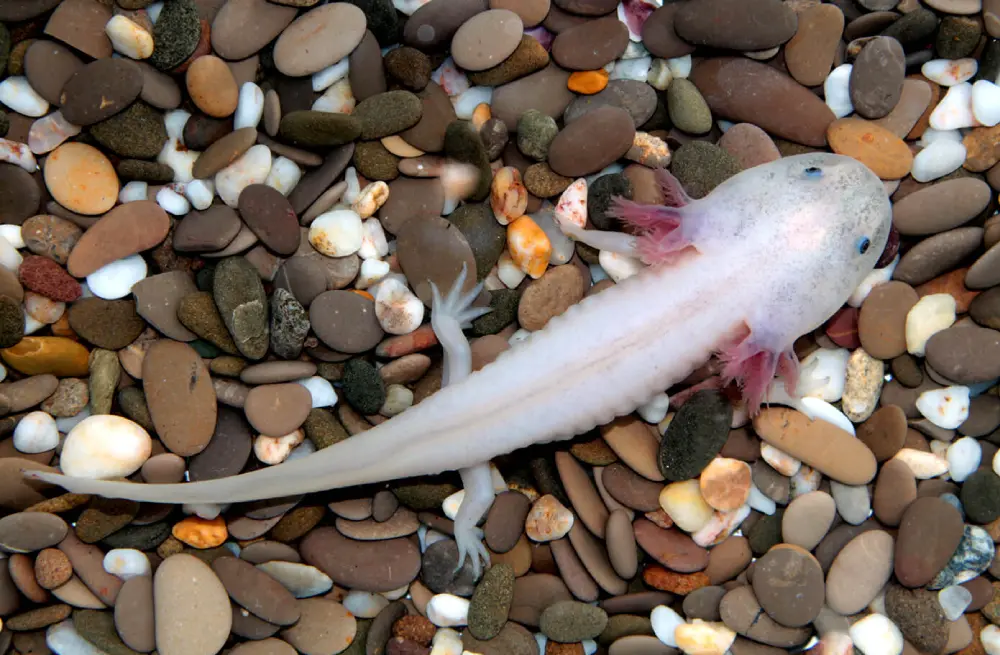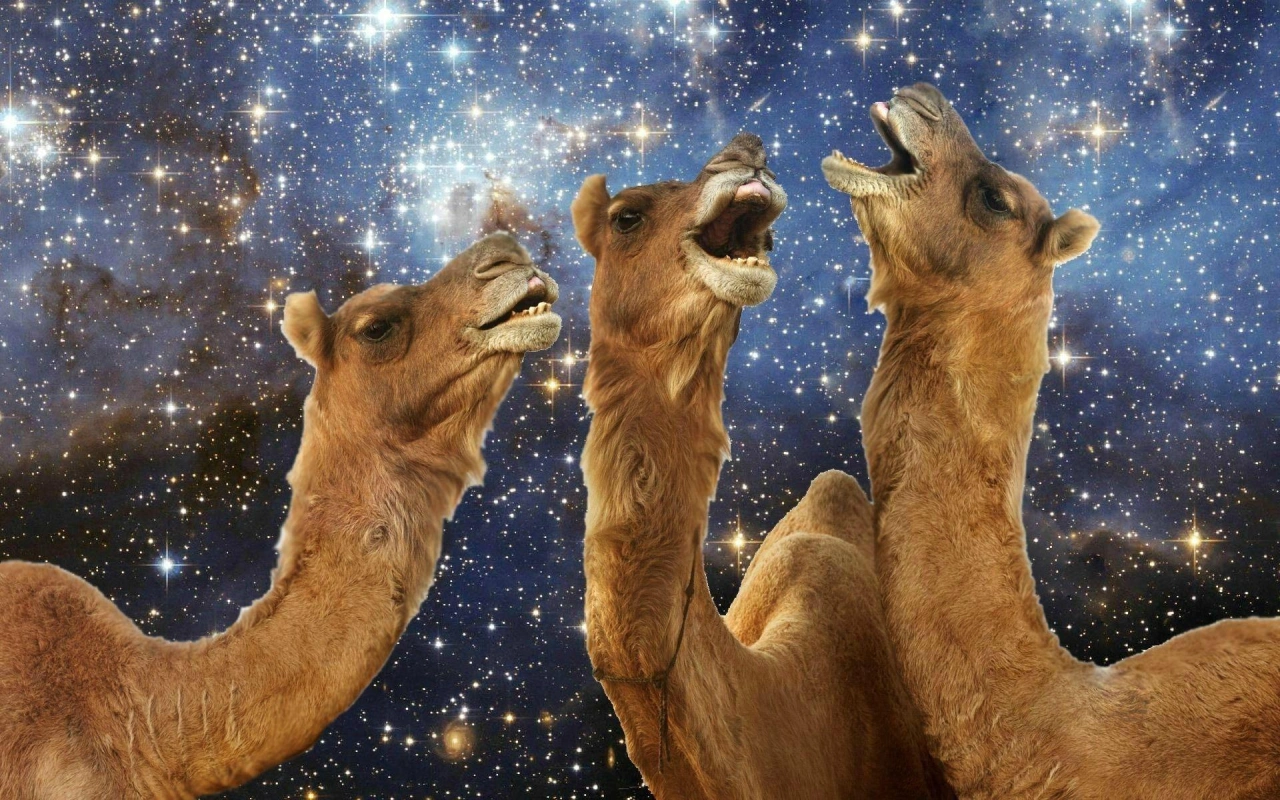Quokkas are small marsupials that belong to the same family as wallabies and kangaroos. These cute little animals are native to southwestern Australia, particularly in Rottnest Island and Perth.
The Noongar people of Western Australia have long known about quokkas, calling them “djok” or “chock”. Unfortunately, quokkas are threatened by introduced predators such as red foxes, cats, and dogs. Like other marsupials, quokkas give birth to underdeveloped young called joeys, which then develop inside their mother’s pouch.
| Characteristic | Quokka |
|---|---|
| Scientific Name | Setonix brachyurus |
| Family | Macropodidae |
| Type | Mammal |
| Order | Diprotodontia |
| Temperament | Friendly and curious |
| Lifespan | 10 years (in the wild) |
| Size | 16 to 21 inches (40 to 54 cm) |
| Weight | 6.6 to 11 pounds (3 to 5 kg) |
| Diet | Herbivore (mainly eats grasses and leaves) |
| Distribution | Rottnest Island and mainland Australia |
| Habitat | Coastal scrublands and forests |
| Other names | Short-tailed scrub wallaby, Rottnest Island kangaroo |
Quokka vs Kangaroo
Many people confuse quokkas with kangaroos due to their similar appearance. However, there are some distinct differences between the two species. Quokkas are much smaller than kangaroos and have a rounder body shape. They also have shorter legs and tails compared to kangaroos.
What is a Quokka in Australia?
Quokkas are unique Australian marsupials that have gained popularity in recent years due to their friendly nature and photogenic smiles. They are often referred to as the “world’s happiest animal” because of their seemingly constant smiley expression.
About the Quokka
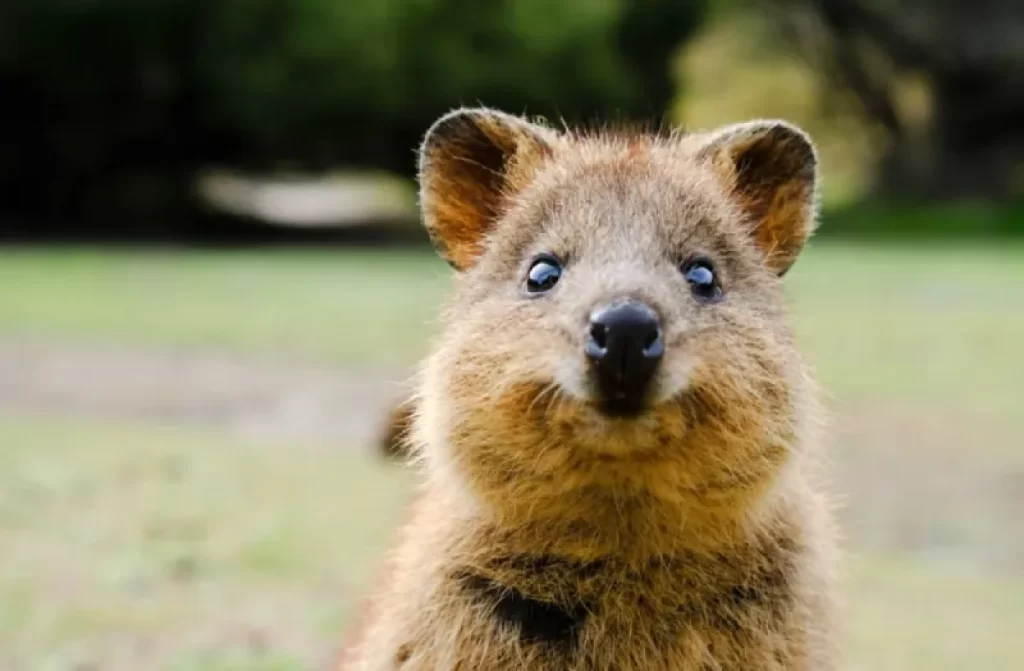
Can You Have a Quokka as a House Pet?
While it may seem tempting to keep a quokka as a house pet because of their cute appearance and friendly demeanor towards humans, it is illegal in most parts of the world including Australia where they are protected by law. It’s important to remember that wild animals belong in their natural habitat and should not be kept as pets.
What is a Quokka Animal?
A quokka is a small marsupial that belongs to the family Macropodidae, which also includes wallabies and kangaroos. They are herbivores and feed on a variety of plants such as grasses, leaves, bark, and stems. Quokkas play an important role in their ecosystem by helping to disperse seeds and maintain vegetation.
Physical Characteristics of Quokkas: Small, Adorable, and Resilient
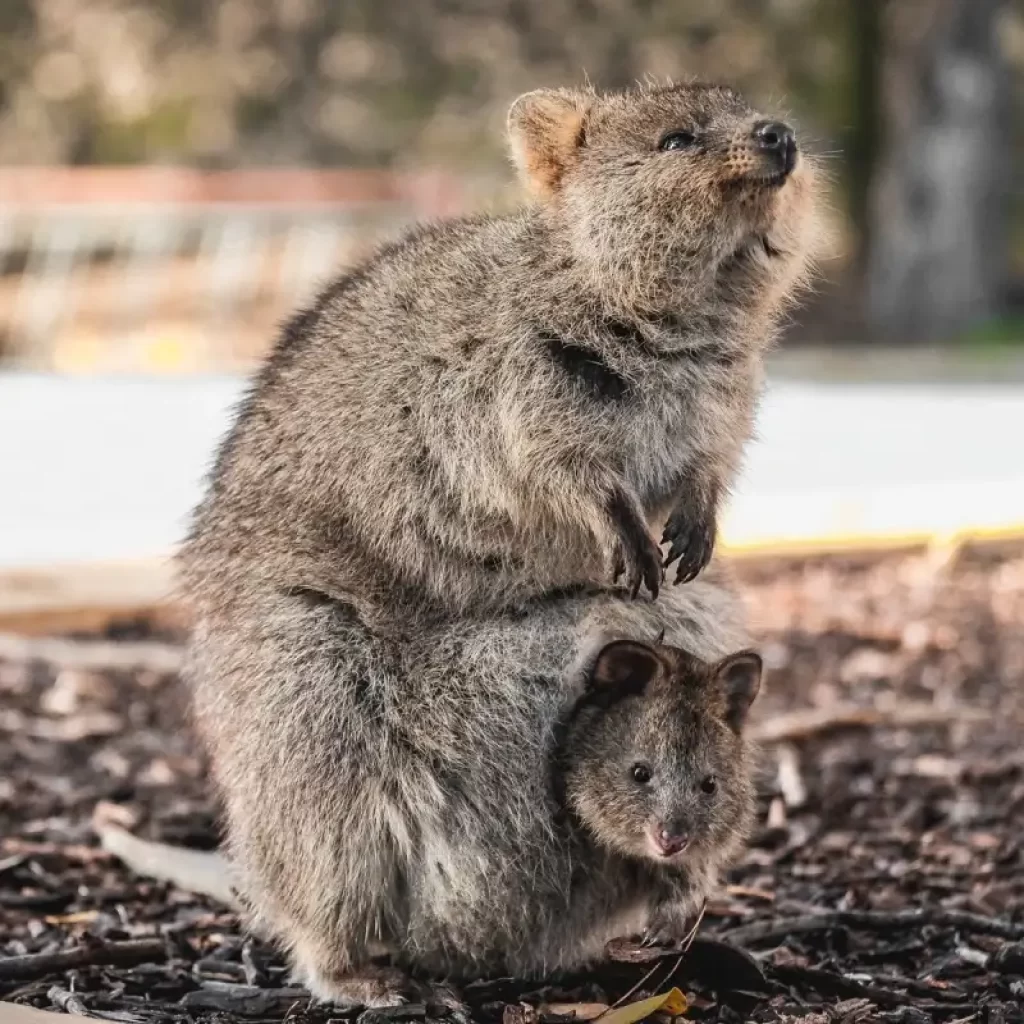
Small and Adorable: Physical Characteristics of Quokkas
Measuring only 40-54 cm in length and weighing between 2.5-5 kg, quokkas are small marsupials that can only be found in Western Australia. Despite their size, they have become quite popular due to their adorable appearance and friendly demeanor. In this section, we will delve deeper into the physical characteristics of quokkas.
Round Ears and Small Head
Quokkas have a distinctive appearance with round ears, a small head with a short snout, and large dark eyes. Their fur is usually brown or grey-brown with lighter underparts and a black nose. The shape of their ears helps them to hear predators approaching while foraging for food at night.
Hind Legs Adapted for Jumping
One of the most remarkable physical features of quokkas is their hind legs that are adapted for jumping. These powerful legs allow them to move quickly through dense vegetation in search of food or to escape from predators such as foxes or dingoes. They also use their tails as a balancing tool when hopping along uneven terrain.
Pouch Babies
Female quokkas carry their babies in their pouches for about six months before they emerge and start exploring the world around them. Baby quokkas are called joeys, just like other marsupials such as kangaroos and wallabies. After emerging from the pouch, joeys continue to nurse from their mother for several more months.
Social Animals
Quokkas are social animals that live in small groups or colonies. Young quokkas often stay with their mothers for an extended period before venturing out on their own. They communicate using various sounds such as grunts, hisses, clicks, and barks.
Resilient Creatures
Despite being cute and cuddly-looking creatures, quokkas are incredibly resilient animals that can survive harsh conditions without access to water for long periods. They have a unique ability to slow down their metabolism and enter a state of torpor, conserving energy until water becomes available again.
Behavior and Habitat of Quokkas: The Happiest Animal on Earth
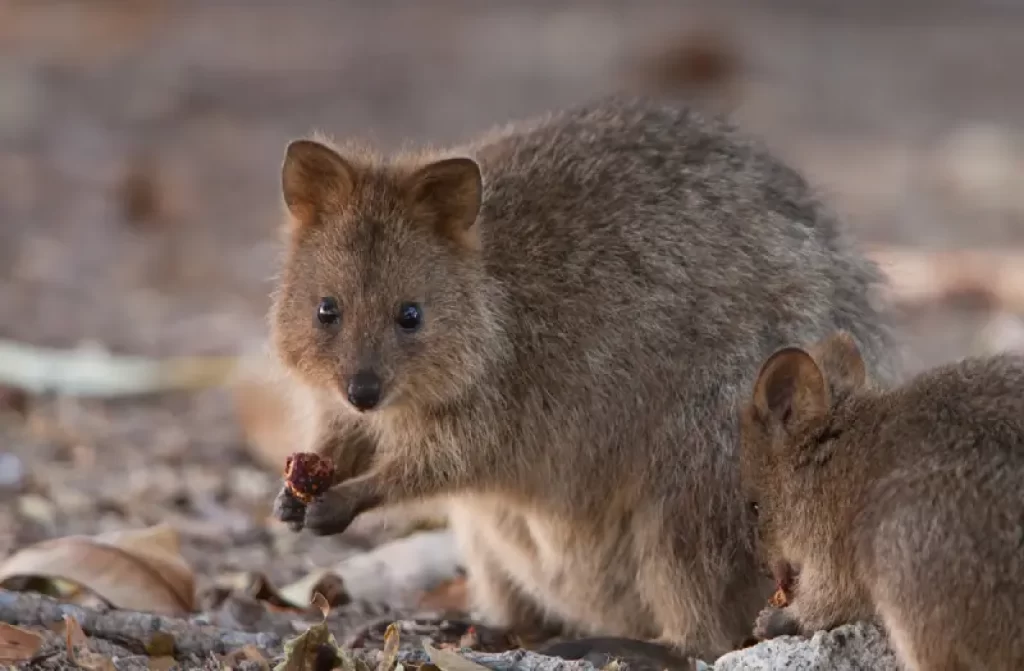
Unique Smile of Quokkas
One of the most distinctive features of quokkas is their unique smile. It’s not just an optical illusion, but a real expression that has earned them the title of “the happiest animal on earth.” The shape of their mouths and the position of their teeth create a permanent grin that gives them a friendly and approachable appearance. This smile has made quokkas famous worldwide, as tourists flock to Western Australia to take selfies with these adorable creatures.
Behavior and Habitat
Quokkas are small marsupials that belong to the macropod family, which also includes kangaroos and wallabies. They are native to Western Australia and can be found in several locations off the coast, including Rottnest Island and Bald Island. These animals are herbivores and feed on a variety of plants such as grasses, leaves, bark, and fruits. They have strong jaws that allow them to chew tough vegetation efficiently.
Quokkas are nocturnal animals that spend most of their days sleeping in shaded areas or burrows. They become active at night when they come out to forage for food or socialize with other quokkas. Despite their small size, they can cover up to 1 km per night in search of food or water sources. Quokkas are social creatures that live in groups called “mobs” or “troops.” These groups consist mostly of females with young joeys (baby quokka), while males tend to live alone.
Why Are Quokkas So Happy?
The reason why quokkas are so happy is still a mystery among scientists. Some researchers believe it’s because they have no natural predators on Rottnest Island where they’re most commonly found; thus, they don’t experience fear like other animals do in the wild.
Others think it’s because quokkas have evolved a unique personality trait that makes them more sociable and less aggressive than other marsupials. This trait enables them to interact with humans without feeling threatened.
Quokkas are also known for their friendly behavior towards humans, which has made them popular among tourists in Western Australia. However, it’s essential to remember that they’re still wild animals and should be treated with respect. Feeding or touching quokkas can harm their health and disrupt their natural behavior patterns.
Importance of Conservation Efforts for Quokkas: Protecting a Vulnerable Species
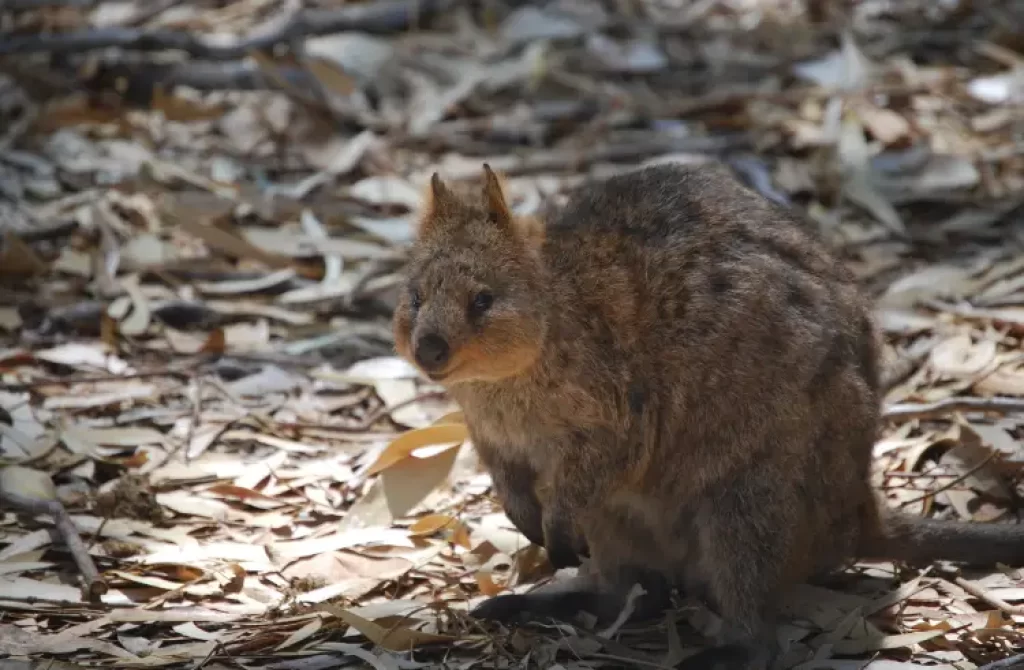
Quokkas are small, wallaby-like marsupials that are native to Western Australia. They have become increasingly popular due to their cute and friendly appearance, but unfortunately, they are also classified as vulnerable species. This is primarily due to habitat loss, predation, and disease. However, conservation efforts can help protect quokkas and ensure their survival in the wild.
Habitat Restoration
Habitat loss is one of the primary threats to quokka populations. As human development continues to encroach on their natural habitats, it becomes essential to restore these areas and provide safe spaces for quokkas to live. Habitat restoration programs involve planting native vegetation and removing invasive species that threaten the ecosystem’s balance. These efforts not only benefit quokkas but also help support other endangered species in the region.
Predator Control
Quokkas have few natural predators; however, introduced predators such as foxes and feral cats pose a significant threat to their survival. Predator control programs aim to reduce the number of these animals in areas where quokkas live by trapping or baiting them. These measures can significantly improve quokka population growth rates.
Disease Management Programs
Disease outbreaks have had devastating effects on some quokka populations in Western Australia. Disease management programs aim to prevent outbreaks by monitoring populations for signs of illness and implementing preventative measures such as vaccination campaigns.
Rottnest Island Authority’s Measures
The Rottnest Island Authority has implemented several measures aimed at protecting quokka populations on Rottnest Island, which is home to over 10% of all known quokka populations worldwide.
These measures include limiting human interaction with quokkas by enforcing strict penalties for harming them or feeding them inappropriate food items. The authority has also installed barriers around roadsides and other high-risk areas where vehicles could potentially harm quokkas.
Tourism Industry’s Role
The tourism industry can also play a significant role in quokka conservation efforts. Tour operators can promote responsible and sustainable practices that minimize the impact on quokka habitats. This includes educating visitors about the importance of not feeding or touching quokkas, staying on designated trails, and disposing of waste properly.
Threats to Quokka Survival in the Wild: Invasive Species, Climate Change, and Human Impact
Habitat Loss Due to Human Activities
Human activities have long been a significant threat to wildlife populations, including the quokka. The clearing of land for agriculture, urbanization, and other development projects has resulted in the loss of critical habitat for quokkas. This has forced them into smaller areas, making them more vulnerable to predation and other threats.
Furthermore, human activities such as recreational activities like off-road vehicles and camping can also cause disturbance to quokka habitats. This increases their vulnerability to predators such as foxes and feral cats who prey on them. As a result of these factors, the population of quokkas in the wild continues to decline.
Climate Change
Climate change is another significant threat to quokka populations in the wild. Changes in heat and rainfall patterns are impacting vegetation growth which is affecting food sources for quokkas. This makes it difficult for them to find enough food to survive.
Moreover, climate change is causing an increase in extreme weather events such as bushfires which destroy large areas of vegetation that provide shelter for quokkas. These events also increase their vulnerability to predators by forcing them out into more open areas where they are easier targets.
Invasive Species
Invasive species are a significant predator threat to quokkas. Predators such as foxes and feral cats were introduced into Australia by humans and compete with native animals for resources like food and shelter. They also prey on small marsupials like the quokka.
The introduction of invasive plant species also impacts the survival of native plants which provide food sources for quokkas. Invasive species can alter ecosystems significantly by changing soil chemistry or altering nutrient cycles that affect plant growth.
Human Impact
Human impact on quokka populations extends beyond habitat destruction and disturbance; it includes hunting, roadkill from vehicles, fishing line entanglement, littering that attracts predators like rats or dogs that kill or harm quokkas. These factors increase the vulnerability of quokkas to predation and other threats.
Quokkas are listed as vulnerable on the IUCN Red List due to these threats and their declining populations in the wild. The conservation of quokka populations requires a multifaceted approach that addresses habitat loss, climate change, invasive species, and human impact.
This includes measures such as habitat restoration, predator control programs, public education campaigns, and strict enforcement of laws that protect wildlife.
Unique Life Cycle of Quokkas: Surviving in Harsh Environments
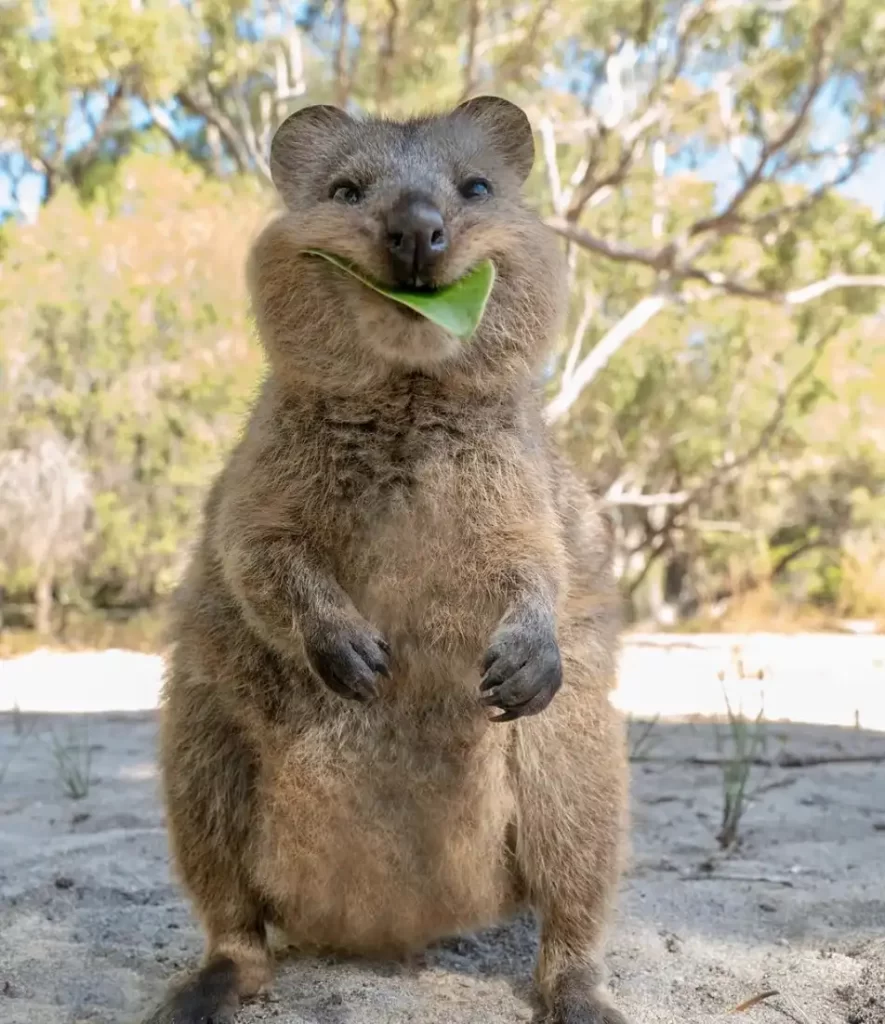
Breeding Season and Competition for Mating Rights
Male quokkas compete for mating rights with females during the breeding season. This competition can be intense, with males fighting each other using their hind feet and tails. The winner of these battles earns the right to mate with a receptive female. Interestingly, male quokkas will also engage in “boxing” matches as a way to show dominance without causing serious harm to one another.
Gestation Period and Birth of Joey
After a successful mating, female quokkas will carry their young for about a month before giving birth to a single joey. The joey is born blind and hairless but quickly grows fur within its mother’s pouch. During this time, the joey relies on its mother’s milk for sustenance.
Raising the Joey
The joey stays in its mother’s pouch for approximately six months before venturing out into the world on its own. During this time, the mother will groom her young and teach it how to find food and water. Once the joey leaves its mother’s pouch, it will continue to nurse from her until it is fully weaned at around eight months old.
Lifespan of Quokkas
Quokkas have an average lifespan of around 10 years in the wild, although they can live up to 15 years in captivity. Their lifespan is influenced by various factors such as predation, disease, habitat loss due to human activity, and climate change.
Adaptations for Survival
Quokkas have several adaptations that help them survive in their harsh environment. One adaptation is their ability to climb trees and shrubs to escape predators or reach food sources that are not easily accessible on the ground. They also have strong legs that allow them to jump up to three times their body length when needed.
Quokkas have a unique ability to survive on very little water. They can obtain most of their hydration from the plants they eat, and they are also able to conserve water by producing dry feces and urinating infrequently.
Diet and Feeding Habits of Quokkas: Adapting to Limited Resources
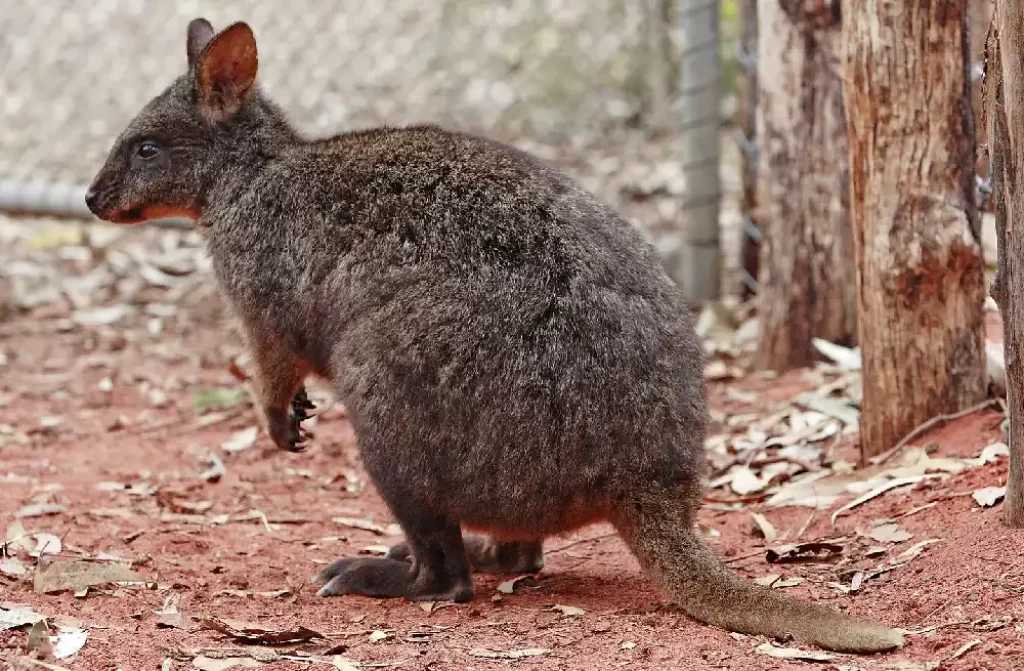
Herbivorous quokkas are known for their unique feeding habits and diet. They primarily feed on grasses, leaves, bark, and stems. Due to the limited abundance of food on their native island habitat, quokkas have adapted to eat a variety of plants and can survive without water for long periods.
Quokkas are found in Western Australia’s Rottnest Island, where they face a scarcity of resources. As a result, they have developed several adaptations to cope with the limited availability of food. Their digestive system is one such adaptation that enables them to extract as much nutrition as possible from their food. They have an enlarged cecum that ferments cellulose-rich plant material into volatile fatty acids that provide energy.
During times of drought, quokkas have been observed to eat succulent plants and even tree bark to supplement their diet. They also consume fungi growing on trees or soil during dry seasons when other foods are scarce. Quokkas’ ability to adapt their diets according to available resources helps them survive in environments with limited food supplies.
Quokkas’ feeding habits are not just adaptive but also unique compared to other herbivores. Unlike kangaroos or wallabies who move around while grazing, quokkas prefer sitting in one place while eating and use their front paws like hands to hold onto food items such as leaves or stems.
Habitat Use by Quokkas: From Islands to Mainland
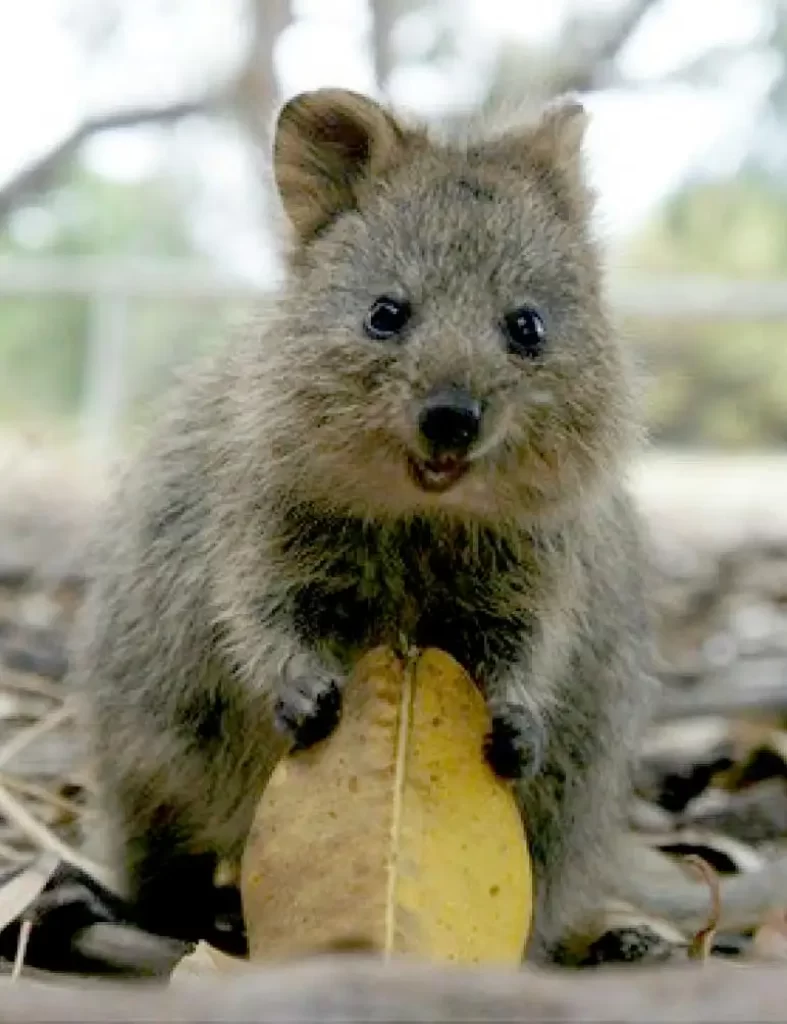
Home Range and Vegetation Requirements
Quokkas are small marsupials that are native to Western Australia. They have a home range of around 1-5 hectares and require shelter and vegetation, such as shrubs and trees, to survive. In particular, they rely on dense ground cover for protection from predators.
On the mainland, quokka populations are found in parks and protected areas in the south west region of Western Australia. These areas provide suitable habitat for quokkas due to their mix of shrubs, trees, and ground cover. However, human disturbance can be a major threat to these populations.
Offshore Islands as Ideal Habitat
Offshore islands provide ideal habitat for quokkas due to their isolation from predators and human disturbance.
The largest population of quokkas is found on Rottnest Island off the coast of Perth. This island has become famous for its friendly quokkas that are unafraid of humans.
Bald Island is another example of an offshore island that is home to a small population of quokkas.
The vegetation on Bald Island is unique compared to other offshore islands with more shrubbery than trees or ground cover. Despite this difference in vegetation, the quokka population has adapted well to this environment.
Variation in Habitat Use
Habitat use by quokkas varies depending on the area they inhabit. Some populations utilize a mix of shrubs and trees while others rely more heavily on ground cover.
For example, on Rottnest Island, where there is less tree coverage than other areas, the majority of the vegetation used by the quokka population consists mainly of grasses and low-lying plants.
In addition to their habitat requirements, seasonal changes also affect where quokkas choose to live within their home range. During summer months when temperatures rise dramatically in some areas, quokkas tend to move towards denser vegetation for protection from the heat.
Encounters and Impact: Human-Quokka Relationship
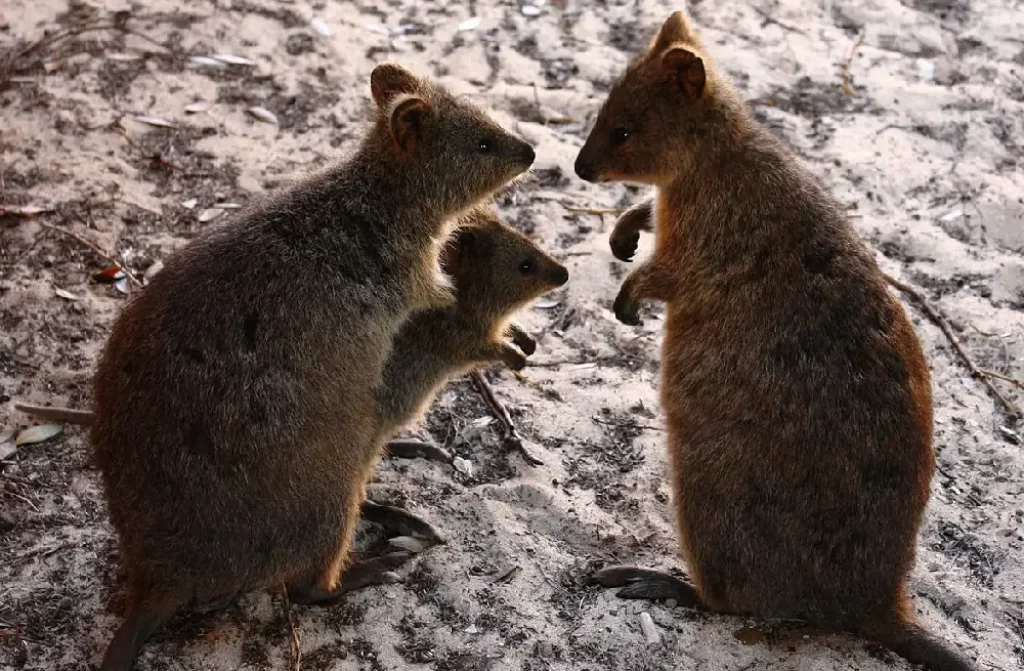
First Encounters with Quokkas
The first recorded encounter between humans and quokkas dates back to the 17th century when Dutch explorer Willem de Vlamingh discovered them on Rottnest Island. He mistook them for giant rats, hence the island’s name. Since then, humans have been interacting with quokkas for centuries.
Impact of Humans on Quokka Population
Unfortunately, human activity has had a significant impact on the quokka population over time. In the 1930s, hunting and habitat destruction led to a decline in their numbers. Today, there are only around 8,000 individuals left in existence. Most of these can be found on Rottnest Island, while smaller populations exist on the mainland.
Protecting Quokkas
Despite their friendly nature and curious demeanor, it is important for people to remember that quokkas are wild animals and should not be approached or fed. While they may seem harmless and approachable, they are still capable of causing harm if provoked or threatened.
During the summer months, female quokkas can be seen carrying joeys in their pouches. This highlights the importance of protecting their habitat and ensuring their survival for future generations. Efforts are being made to conserve and protect these unique animals for the world to enjoy.
What Happens If You Touch a Quokka?
It is vital never to touch or feed a quokka as it could cause stress or illness in these animals. They have sharp claws that can cause injury if they feel threatened or scared by human activity.
Why We Should Care About the Future of Quokkas
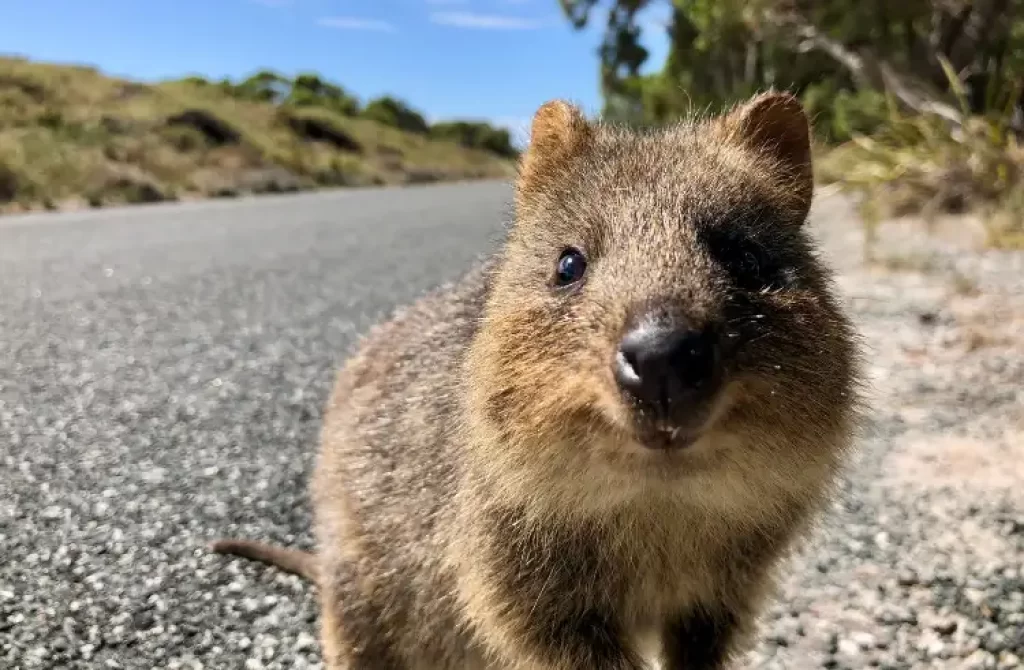
The future of quokkas is uncertain, but it is up to us to take action to protect these adorable and resilient creatures. As we have learned, quokkas face numerous threats in their natural habitat, including invasive species, climate change, and human impact. Conservation efforts are crucial for the survival of this vulnerable species.
Quokkas play an important role in their ecosystem as seed dispersers and grazers. They also serve as a vital component of the food chain for larger predators such as snakes and birds of prey. Without quokkas, the balance of the ecosystem would be disrupted.
Furthermore, quokkas have become a beloved symbol of happiness and positivity around the world. Their friendly demeanor and cute appearance have made them popular among tourists who visit their habitat on Rottnest Island or on the mainland in Western Australia. However, this popularity has also led to negative impacts such as habitat destruction and disturbance.
It is our responsibility to ensure that future generations can enjoy seeing quokkas in their natural habitat. By supporting conservation efforts through donations or volunteering with organizations dedicated to protecting these creatures, we can make a difference. Reducing our carbon footprint and advocating for sustainable practices can help mitigate the effects of climate change on quokka habitats.

